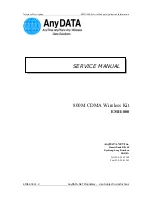
Tanks
: Displays detailed tank level sensor information.
Trim
: Displays the trim angle of the engines.
Active Alarms
: Displays any active alarms for the engines.
Trouble Code
: Displays the corresponding trouble codes for the
active engine alarms. Provide this information to the Yamaha
dealer.
Engine Information
You can view information about the engine. You can also view
alarms, trouble codes, and maintenance logs.
Select
Info
>
Engine Information
.
Trip
: Displays information about the trip, such as distance and
hours, and allows you to reset these values.
Maintenance Reminder
: Displays maintenance information,
and enables you to set the maintenance intervals, and reset
the time elapsed since the previous maintenance.
Tanks
: Displays detailed tank level sensor information.
Trim
: Displays the trim angle of the engines.
YAMAHA System Info
: Displays information about the engine
system.
Active Alarms
: Displays any active alarms for the engines.
Trouble Code
: Displays the corresponding trouble codes for the
active engine alarms. Provide this information to the Yamaha
dealer.
Setting the Fuel Alarm
Before you can set a fuel level alarm, a compatible fuel flow
sensor must be connected to the chartplotter.
You can set an alarm to sound when the total amount of
remaining onboard fuel reaches the level you specify.
1
Select
Settings
>
Alarms
>
Fuel
>
Set Total Fuel Onboard
>
On
.
2
Enter the remaining amount of fuel that triggers the alarm,
and select
Done
.
Setting the Fuel Capacity of the Vessel
1
Select
Settings
>
My Vessel
>
Fuel Capacity
.
2
Enter the combined total capacity of the fuel tanks.
Synchronizing the Fuel Data with the Actual Vessel
Fuel
You can synchronize the fuel levels in the chartplotter with the
actual fuel in the vessel when you add fuel to your vessel.
1
Select
OneHelm™, A/V, Gauges
>
Engines
>
Menu
.
2
Select an option:
• After you have filled up all the fuel tanks on the vessel,
select
Fill Up All Tanks
. The fuel level is reset to
maximum capacity.
• After you have added less than a full tank of fuel, select
Add Fuel to Boat
, and enter the amount added.
• To specify the total fuel in the vessel tanks, select
Set
Total Fuel Onboard
, and enter the total amount of fuel in
the tanks.
Viewing the Wind Gauges
Before you can view wind information, you must have a wind
sensor connected to the chartplotter.
Select
OneHelm™, A/V, Gauges
>
Wind
.
Configuring the Sailing Wind Gauge
You can configure the sailing wind gauge to show true or
apparent wind speed and angle.
1
From the wind gauge, select
Menu
>
Sailing Wind Gauge
.
2
Select an option:
• To show true or apparent wind angle, select
Needle
, and
select an option.
• To show true or apparent wind speed, select
Wind Speed
,
and select an option.
Configuring the Speed Source
You can specify whether the vessel speed data displayed on the
gauge and used for wind calculations is based on water speed
or GPS speed.
1
From the wind gauge, select
Menu
>
Compass Gauge
>
Speed Display
.
2
Select an option:
• To calculate the vessel speed based on data from the
water-speed sensor, select
Water Speed
.
• To calculate the vessel speed based on GPS data, select
GPS Speed
.
Configuring the Heading Source of the Wind Gauge
You can specify the source of the heading displayed on the wind
gauge. Magnetic heading is the heading data received from a
heading sensor, and GPS heading is calculated by your
chartplotter GPS (course over ground).
1
From the wind gauge, select
Menu
>
Compass Gauge
>
Heading Source
.
2
Select
GPS
or
Magnetic
.
NOTE:
When moving at low speeds or when stationary, the
magnetic compass source is more accurate than the GPS
source.
Customizing the Close-Hauled Wind Gauge
You can specify the range of the close-hauled wind gauge for
both the upwind scale and the downwind scale.
1
From the wind gauge, select
Menu
>
Compass Gauge
>
Gauge Type
>
Close Hauled Gauge
.
2
Select an option:
• To set the maximum and minimum values that appear
when the upwind close-hauled wind gauge appears, select
Change Upwind Scale
, and set the angles.
• To set the maximum and minimum values that appear
when the downwind close-hauled wind gauge appears,
select
Change Downwind Scale
, and set the angles.
• To view true or apparent wind, select
Wind
, and select an
option.
Viewing Trip Gauges
Trip gauges show information for odometer, speed, time, and
fuel for your present trip.
Select
Info
>
Trip & Graphs
>
Trip
.
Resetting Trip Gauges
1
Select
Info
>
Trip & Graphs
>
Trip
.
2
Select an option:
• To set all the readings for the present trip to zero, select
Reset Trip
.
• To set the maximum speed reading to zero, select
Reset
Maximum Speed
.
• To set the odometer reading to zero, select
Reset
Odometer
.
• To set all the readings to zero, select
Reset All
.
Battery Management
You can view the battery and other power sources, and the
devices that use those sources.
Batteries are listed along the top of the screen. Other sources of
power, such as solar, alternator, converter, and wind generator,
are listed along the left side. The items along the right side of
42
Gauges and Graphs
Summary of Contents for GPSMAP 8600 series
Page 1: ...GPSMAP 8400 8600SERIES Owner sManual...
Page 67: ......
Page 68: ...support garmin com December 2018 190 01978 00_0H...
















































